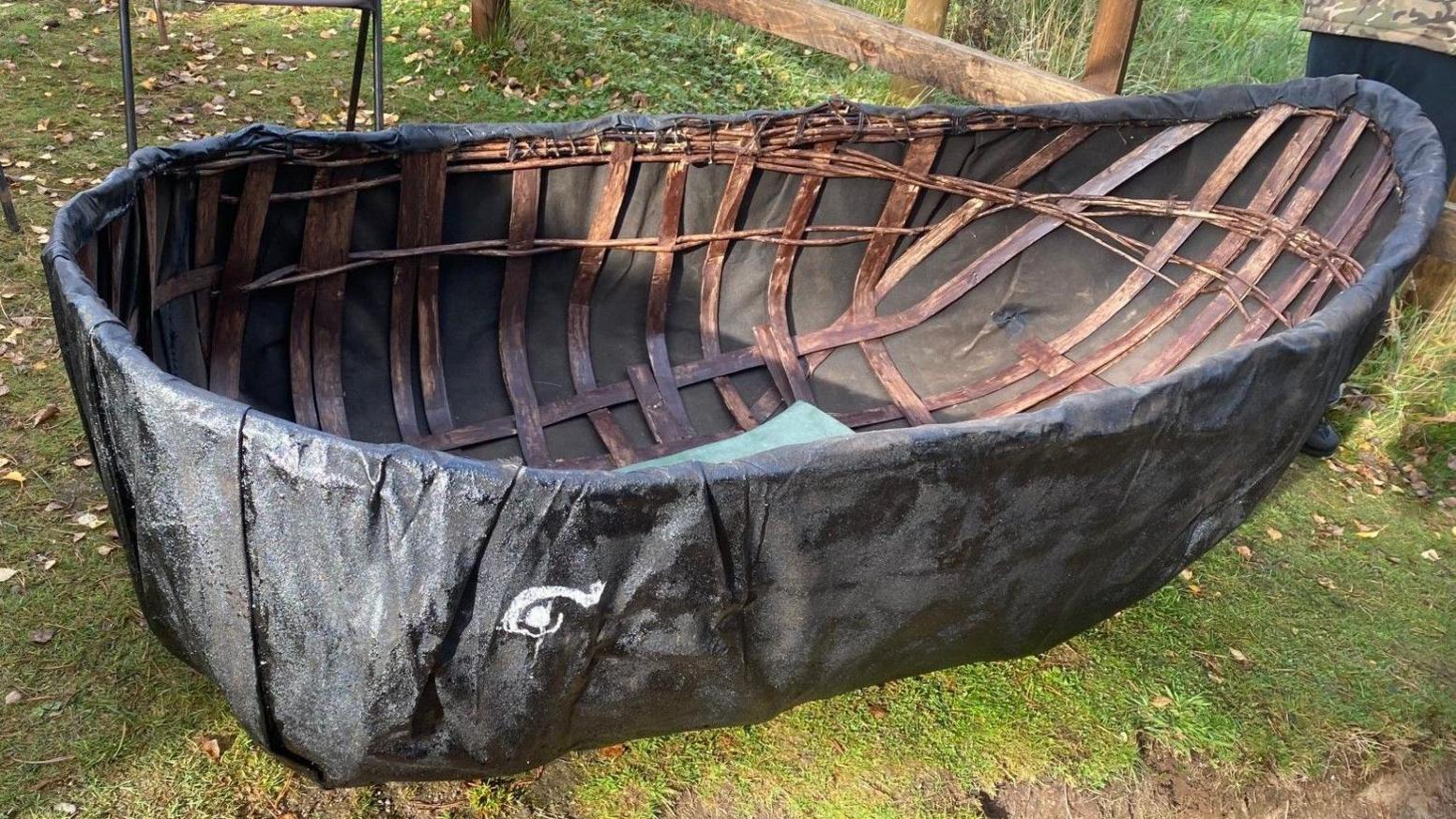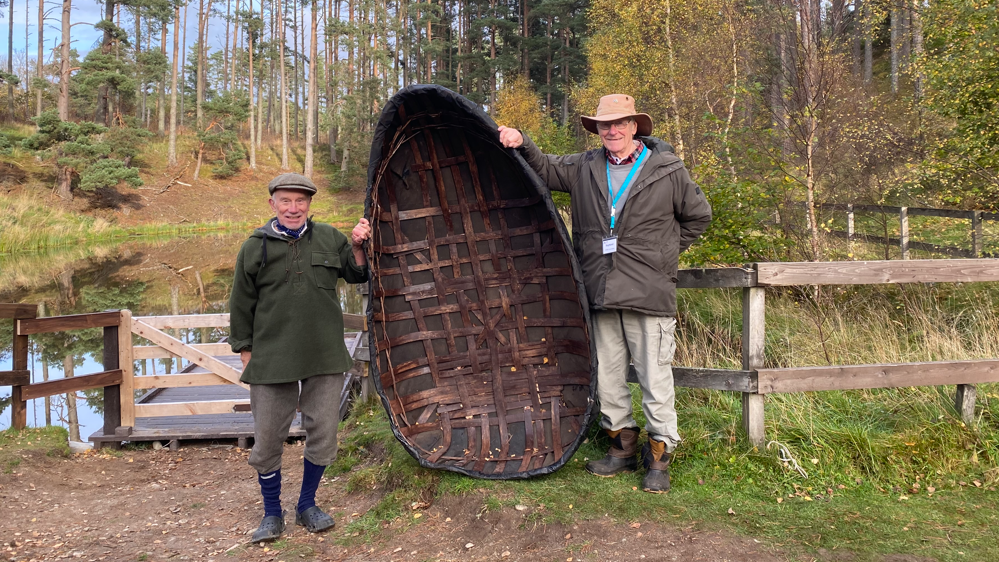Bronze Age coracle recreated 50 years after its discovery

A coracle has been made based on archaeological evidence gathered at a Bronze Age cemetery in Fife
- Published
A reconstruction of a Bronze Age coracle has been completed 50 years after the prehistoric boat was discovered buried in Fife.
Coracles are small boats still in use today, including in parts of Scotland and Wales.
In 1975, a farmer ploughing a field at Barns Farm at Dalgety Bay uncovered a Bronze Age cemetery and three graves with people buried in coracles.
Jeremy Usher Smith, of Newtonmore's Insh Coracle Club, external, based his reconstruction on archaeological evidence gathered from the site.

The wooden frame of the reconstructed coracle
The Barns Farm coracles, along with one in Elgin Museum in Moray, external, are believed to be the oldest in the world.
Mr Usher Smith used willow and hazel to construct the boat using techniques that have almost remained unchanged for 4,000 years.
The frame was then covered in a heavy woven textile called calico and waterproofed with bitumen paint.
In the Bronze Age the frame would have been covered in cow, horse or seal skin.
The finished reconstruction is almost 2m (6.5ft) long.
Unlike modern coracles there is no seat, and the person paddling has to kneel down in the bottom of the craft.
Mr Usher Smith said he believed the shape was similar to coracles still in use on the River Teifi in west Wales.
He said: "There was a lot of discussion after about the shape and how it was made."

The completed boat is a new addition for Insh Coracle Club
Mr Usher Smith also suggested that the Bronze Age boat was used at sea rather than on rivers due to where it was found near the Firth of Forth.
It has a high stern which would have been suited to use in waves.
Mr Usher Smith said a dump called a midden, found near the cemetery, contained a large amount of shellfish.
He said: "The logic is that if you've got a coracle then you'd be able to go out to all these little islands and rocks that were exposed at low tide.
"And so they were obviously harvesting shellfish and doing it for several hundred years to get this quite sizeable midden.
"Things like crab and lobster as well I should think."
There are no other examples of a sea-going coracle in Britain.